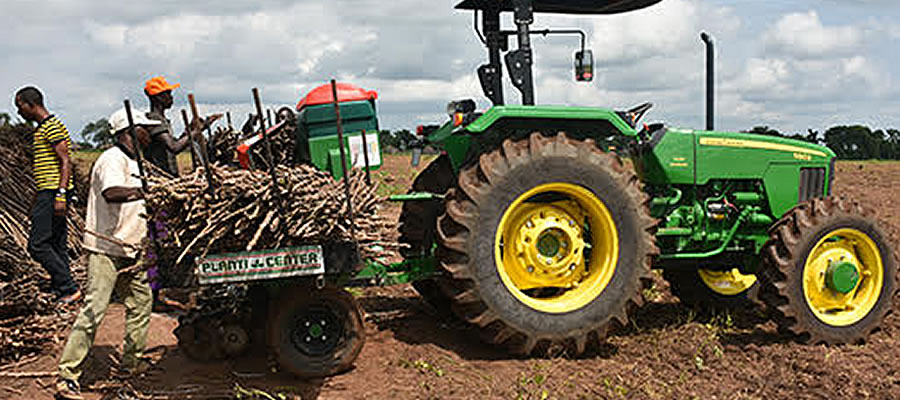

The Municipality is located at the eastern part of the Ashanti Region and lies between latitudes 6030? and 7030? North and longitudes 0 015? and 1020? West. It shares boundaries with the Sekyere Kumawu District in the north, Kwahu East District in the east, Asante Akim South Municipal in the south and the Sekyere East District in the west. It covers a land area of 1,126 square kilometers constituting 4.6 percent of the region?s land area (24,389 square kilometers). The total population of the Municipality is 69,186 in 2010. The Municipality has a more populous rural sector (53.5%) than the urban sector (46.5%).
Relief and drainage
Topographically, the Municipality is undulating ranging from 305 to 610 metres and it is interrupted by a stretch of the Akwapim-Mampong Range. The Akwapim-Mampong Range serves as a watershed for the numerous rivers and streams in the Municipality. The Municipality is drained by rivers such as Oweri and Afram. The steep slopes at Kyiriyawa near Hwidiem and Onyem have created waterfalls which are yet to be developed as tourist sites.
Climate
The Asante-Akim North Municipality experiences wet semi-equatorial climate and temperature is found to be uniformly high all year round with a mean annual temperature of 26oC. The rainfall regime is double maxima with annual total rainfall between 125cm and 175cm with the peaks occurring in July and November; the first rainy season from May to July and the second from September to November.
The dry harmattan season occurs between December and March and is associated with drought conditions. This period is characterized by relatively high and low temperatures during the day and night respectively. Streams dry up during this period and crop farming comes to a halt except vegetable growing along the banks of rivers and streams.
Vegetation and soils
The Municipality lies within the moist Semi-Deciduous Forest Belt and the major vegetation types
are:
- The Open Forest covering 576 square kilometers over the highland areas
- The Closed Forest covering 230 square kilometres on the range
- The Wooded Savannah covering 246 square kilometres.
Tree species found in the forest are Wawa, Ofram, Otie, Sapele, Sanfina, Onyina among and others. In order to maintain the micro-climate, parts of the forests in the District have been reserved. There are four (4) forest reserves in the District. These are the Bandai Hill reserves at Nyinatokrom, Abrewapon, Bebome and Nyamebekyere.
The forest reserves serve as a source of raw materials for the building and construction industries as well as a source of income to the Municipal Assembly and traditional authorities in terms of royalties (stool lands) and legal timber firms operating in as concessions within the District. The forest reserves are endowed with mushrooms and snails hence; the Municipality has the potential for mushroom and snail farming.
Geology and Minerals
The natural resources that can be found in the Municipality are mainly minerals and forest products as well as water bodies. Mineral resources include gold deposits found in the strip from Kyekyewere to Pekyerekye. Other gold bearing rocks include Granite, Biotite and Muscovite found at Wioso.
Date Created : 12/4/2017 8:13:03 AM












 facebook
facebook
 twitter
twitter
 Youtube
Youtube
 +233 593 831 280
+233 593 831 280 0800 430 430
0800 430 430 GPS: GE-231-4383
GPS: GE-231-4383 info@ghanadistricts.com
info@ghanadistricts.com Box GP1044, Accra, Ghana
Box GP1044, Accra, Ghana